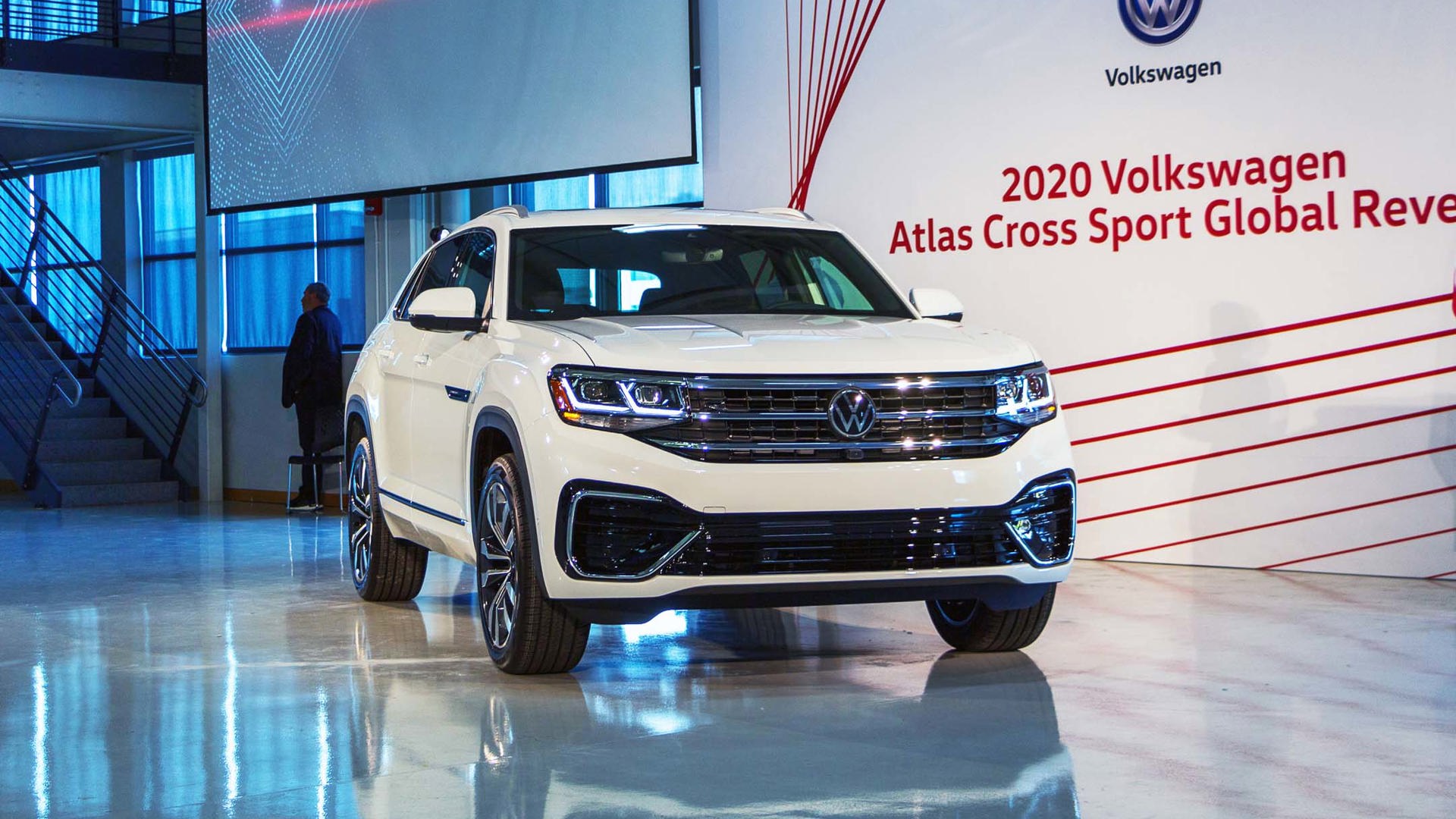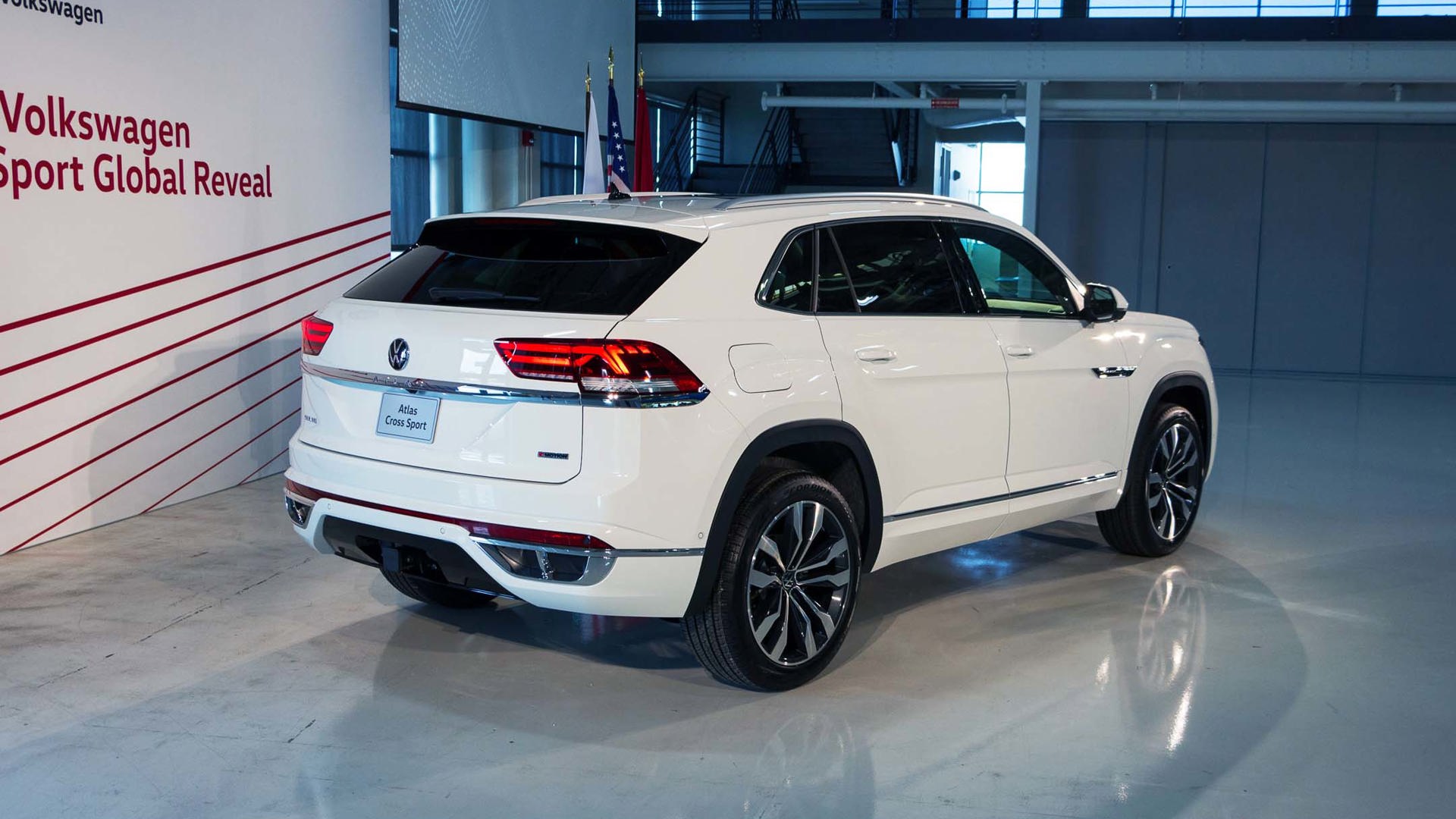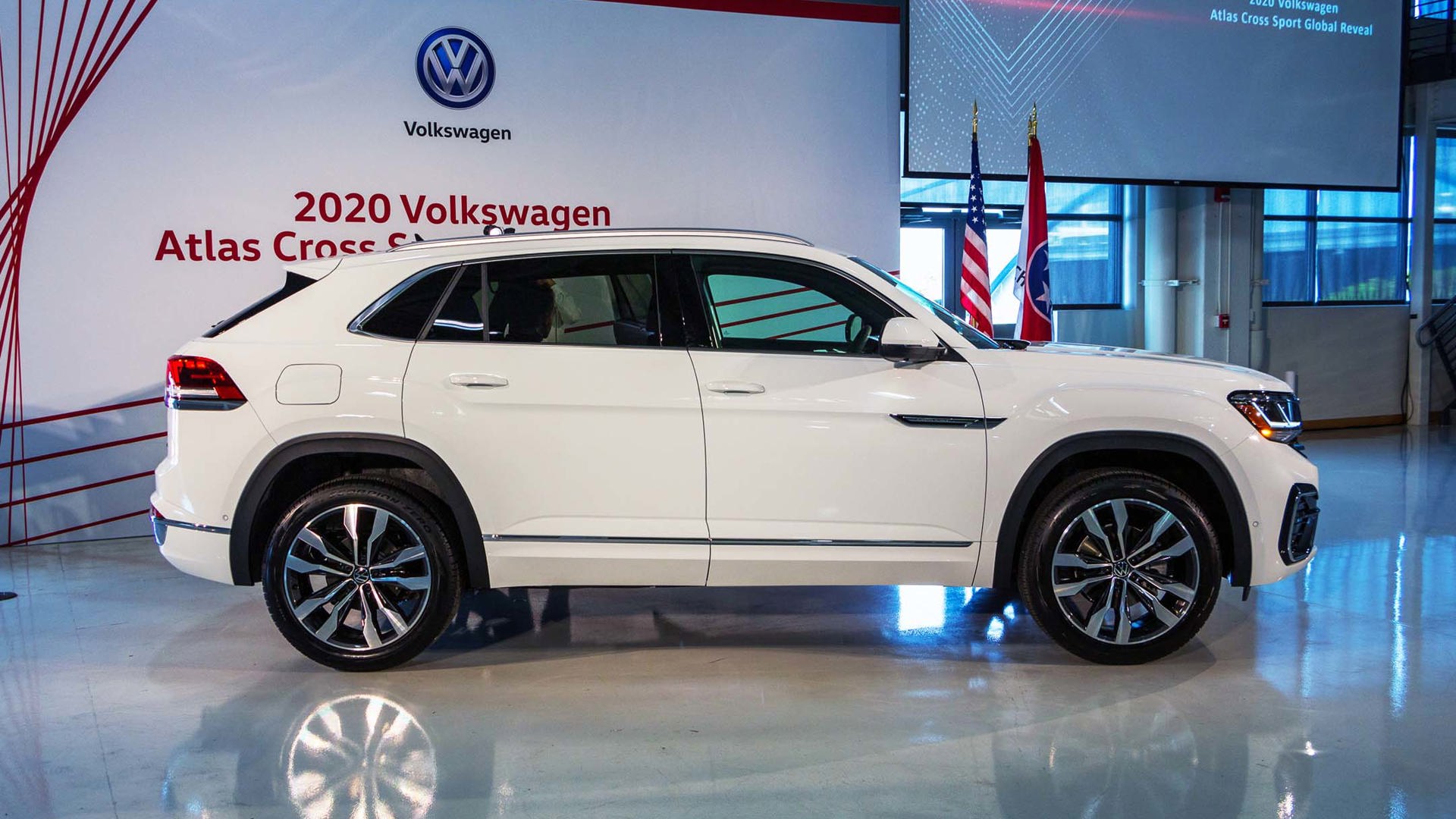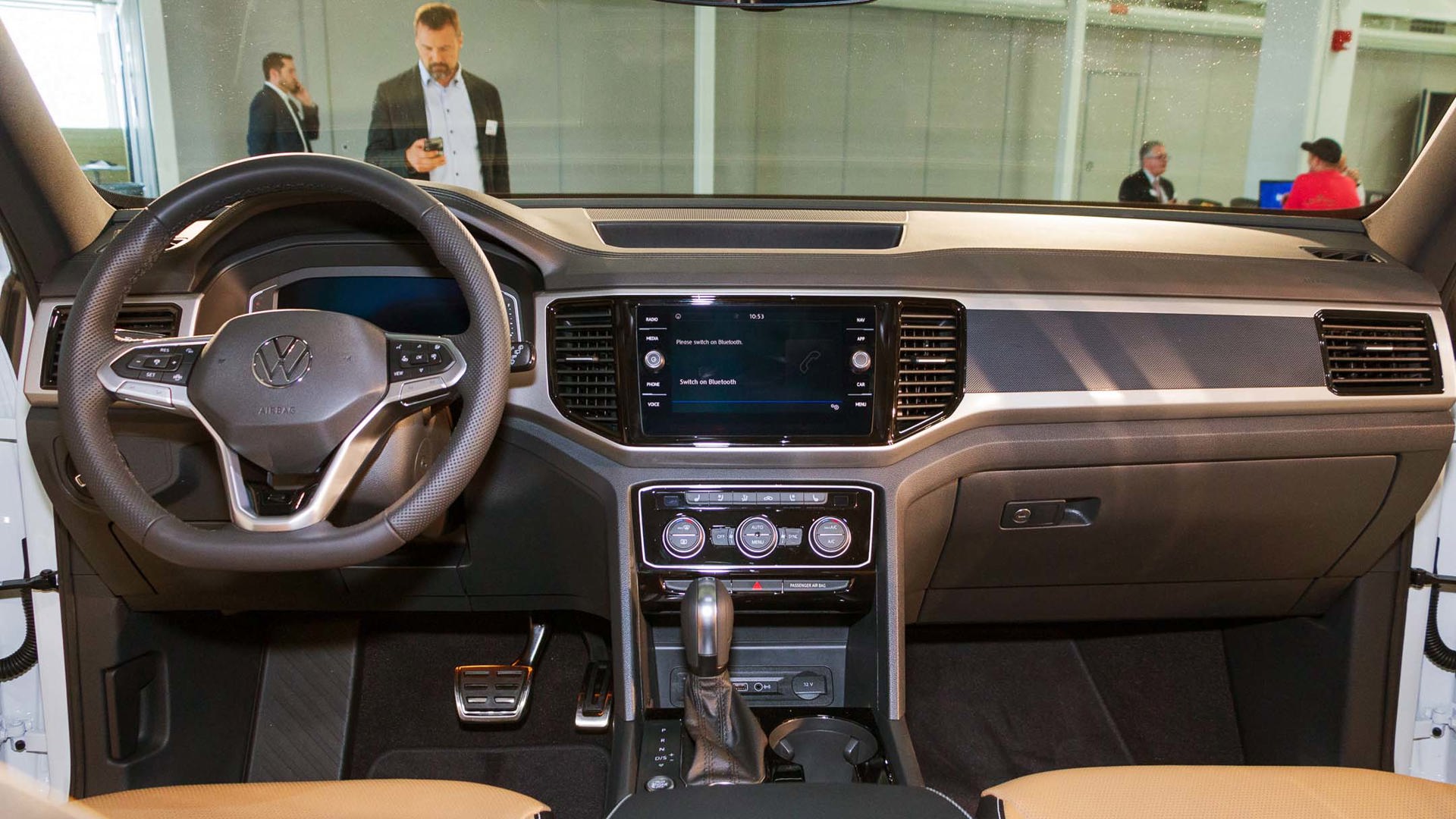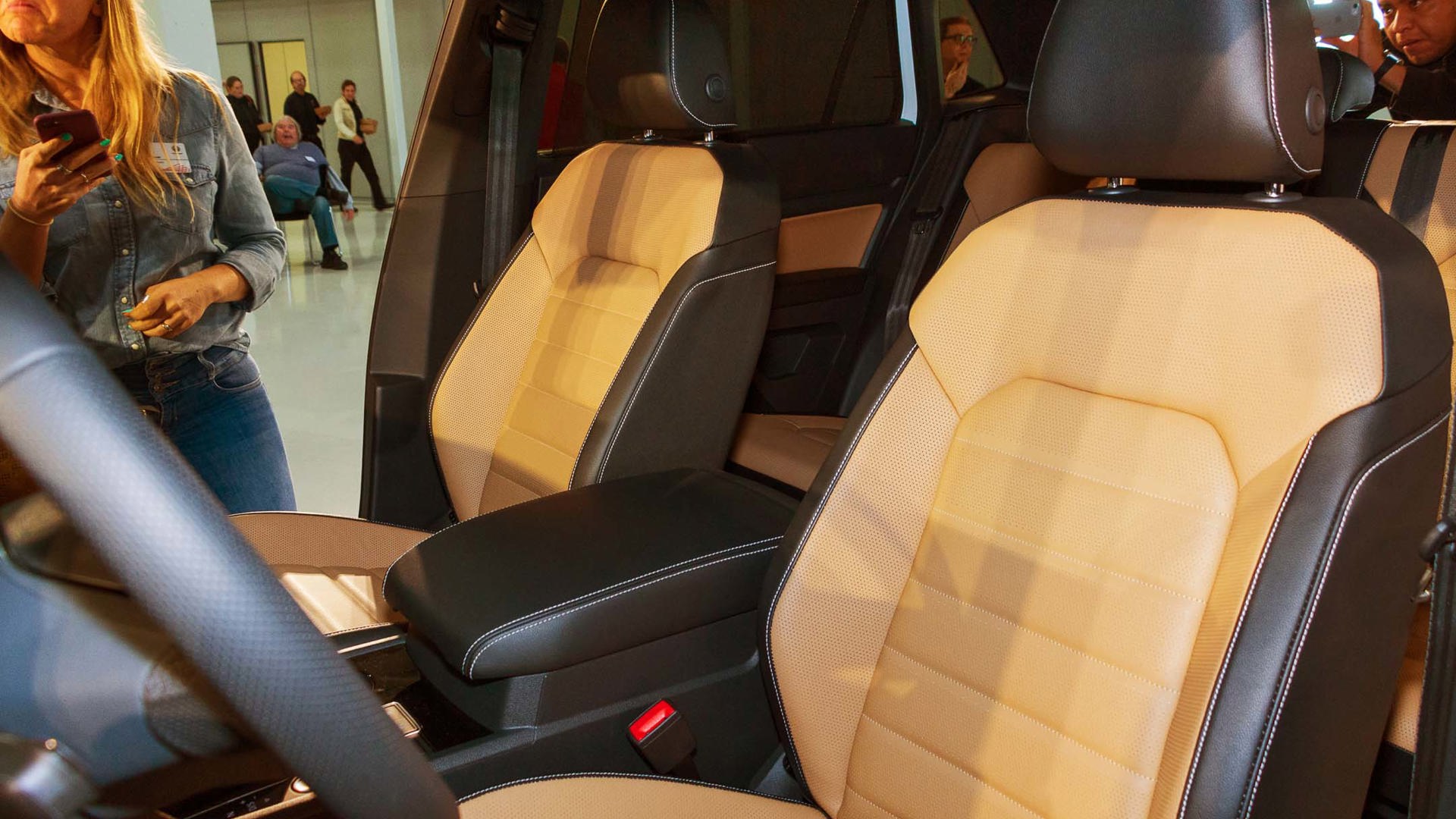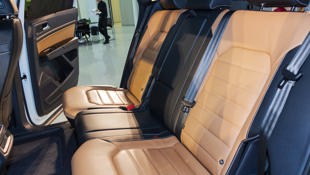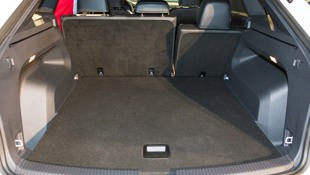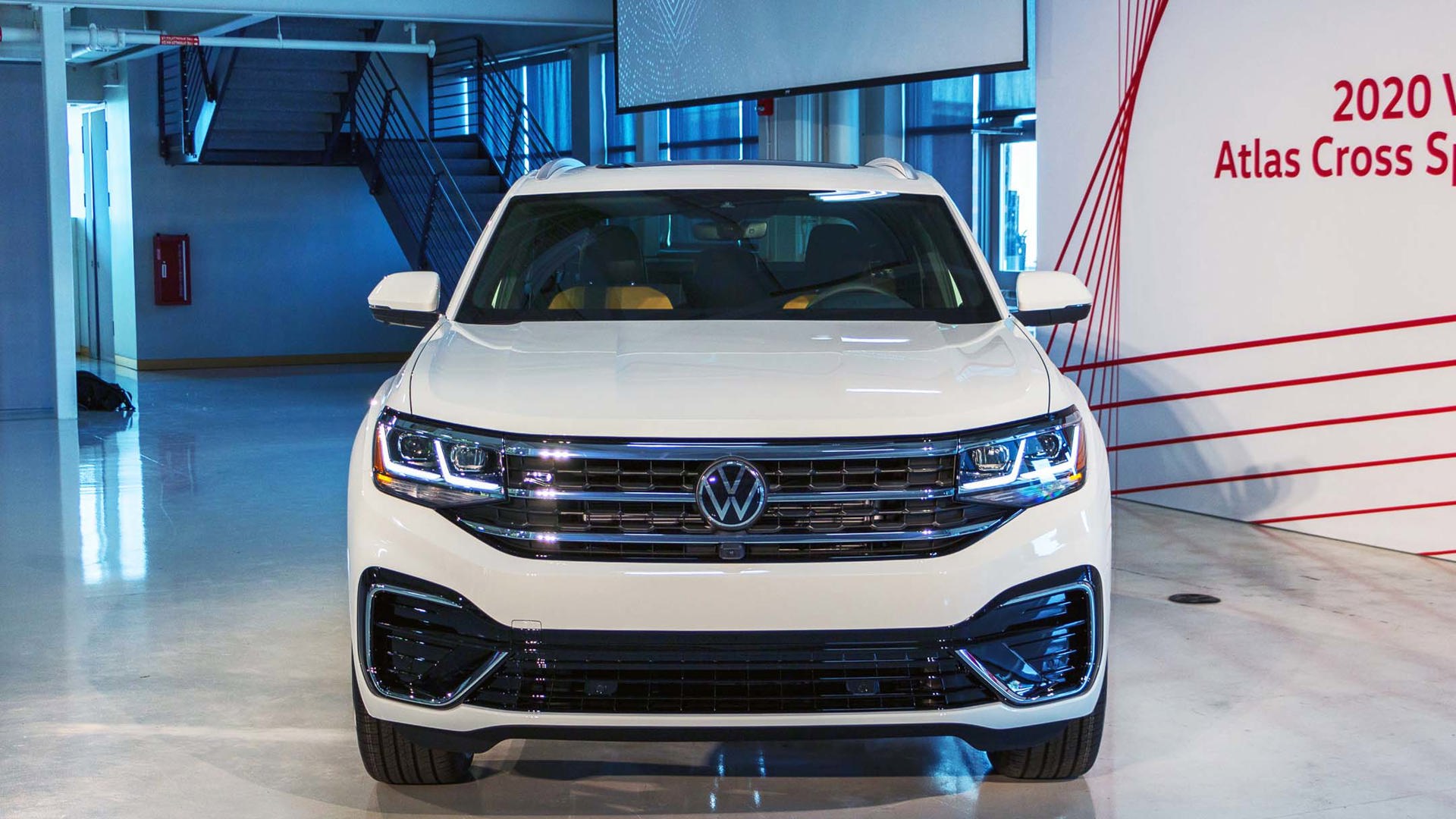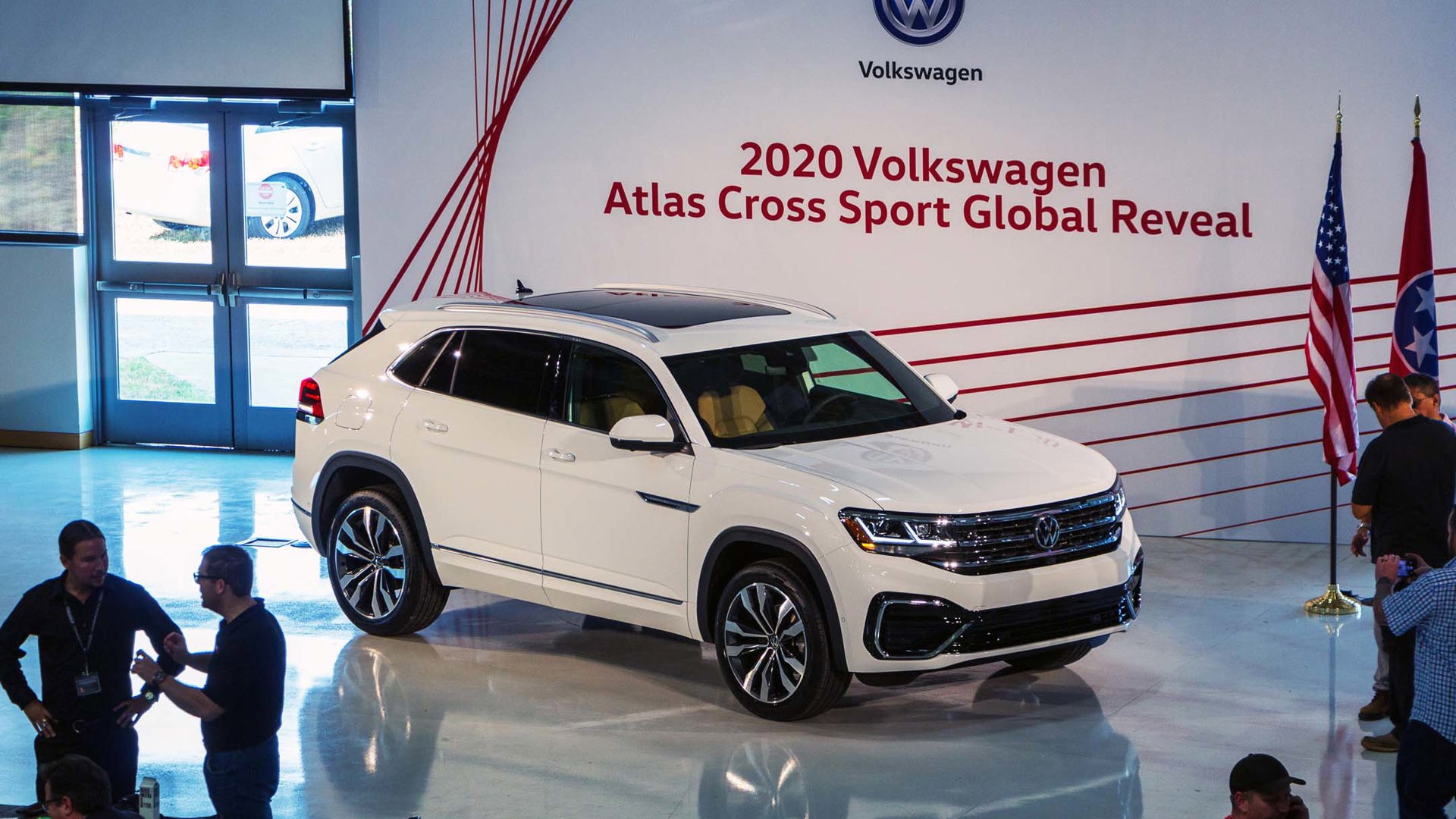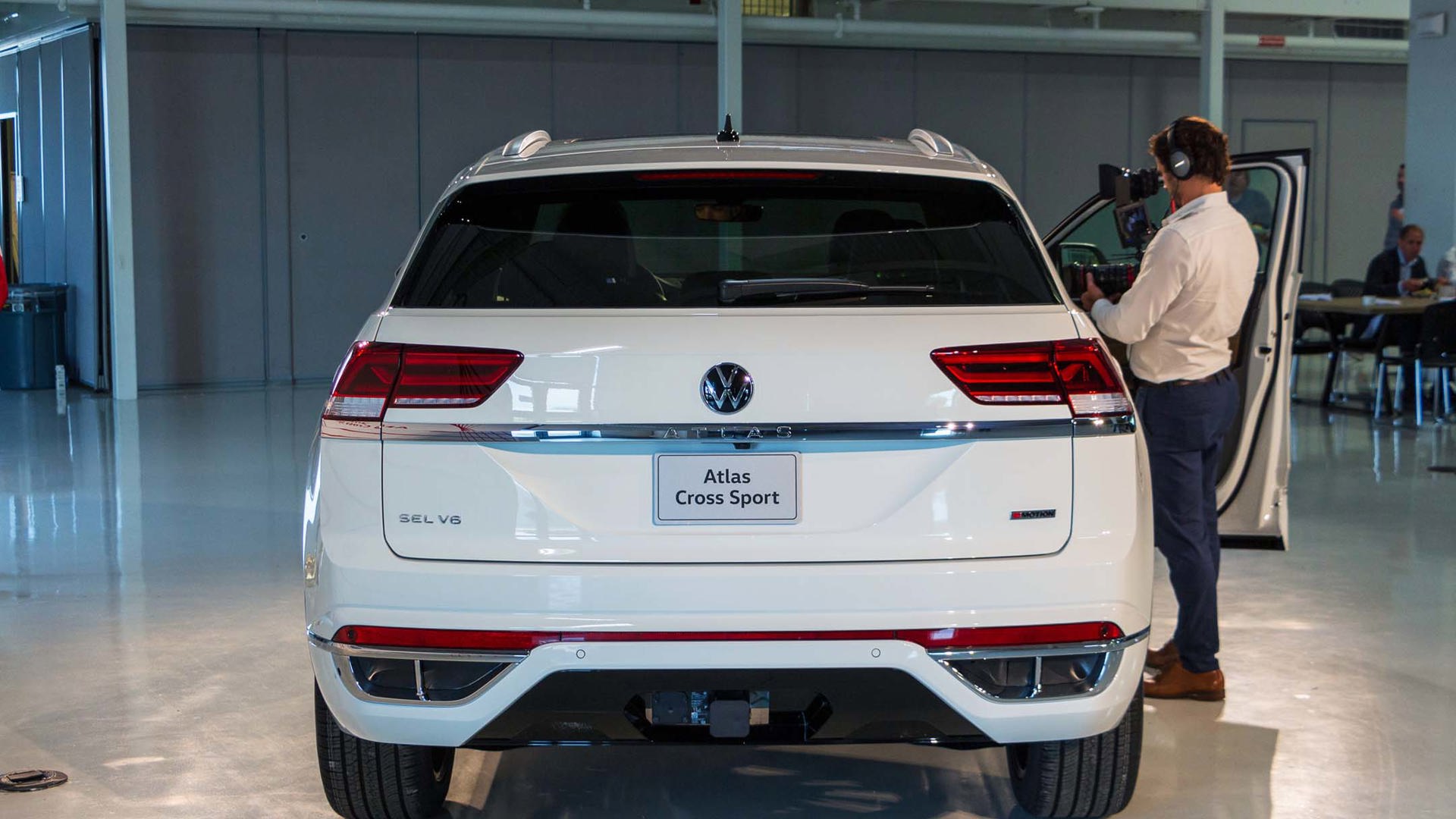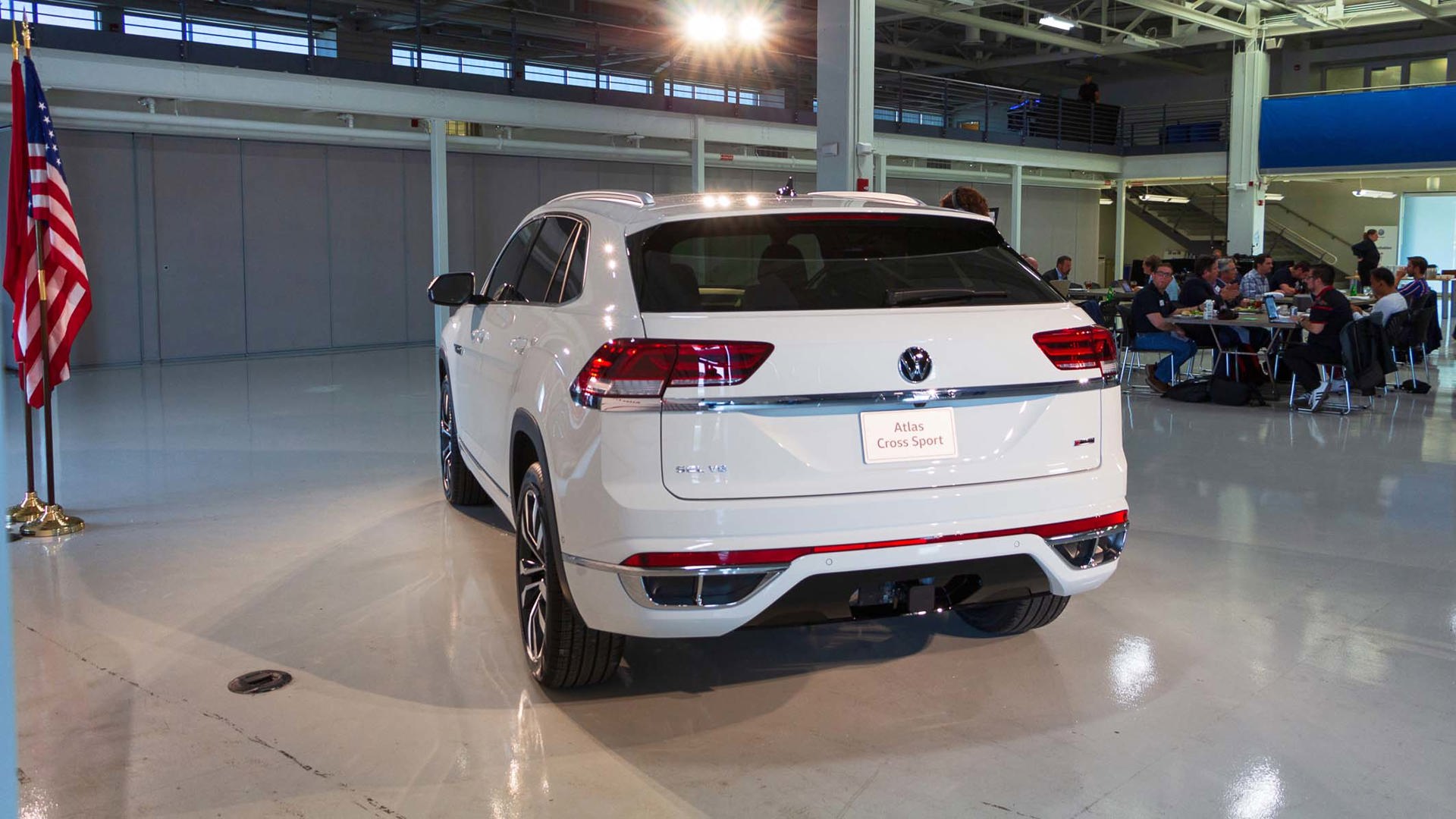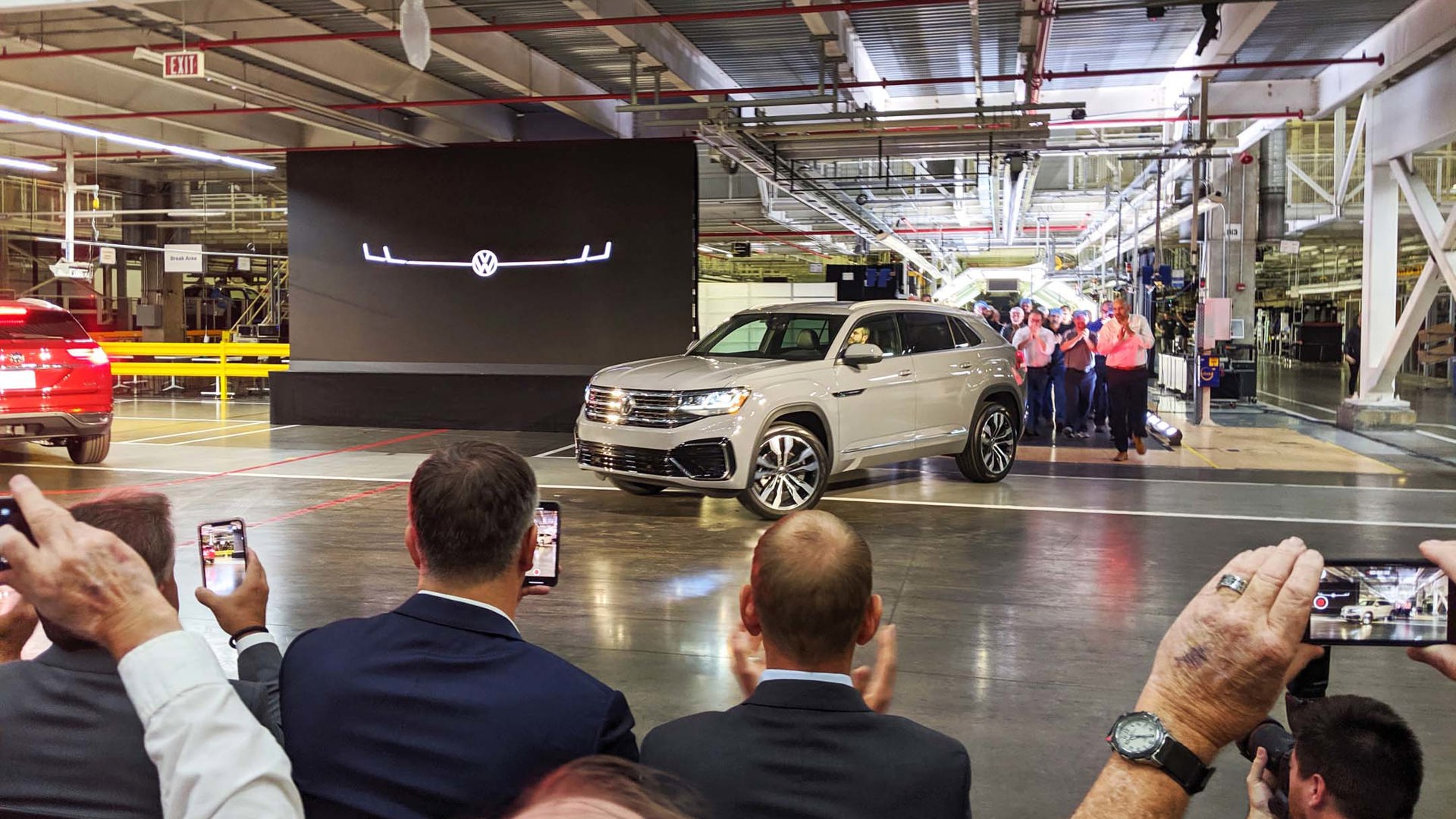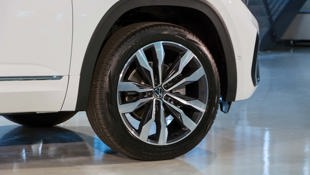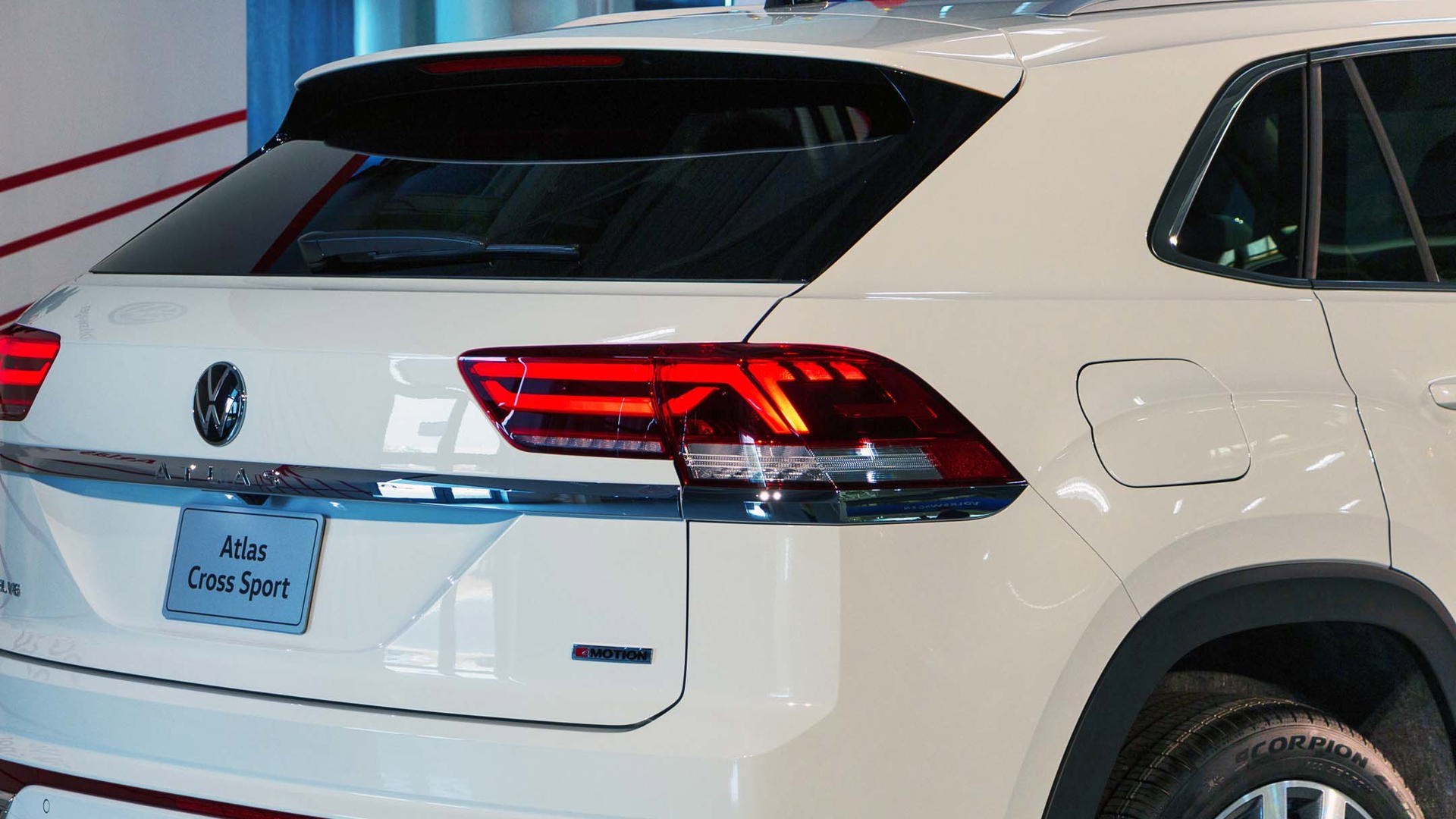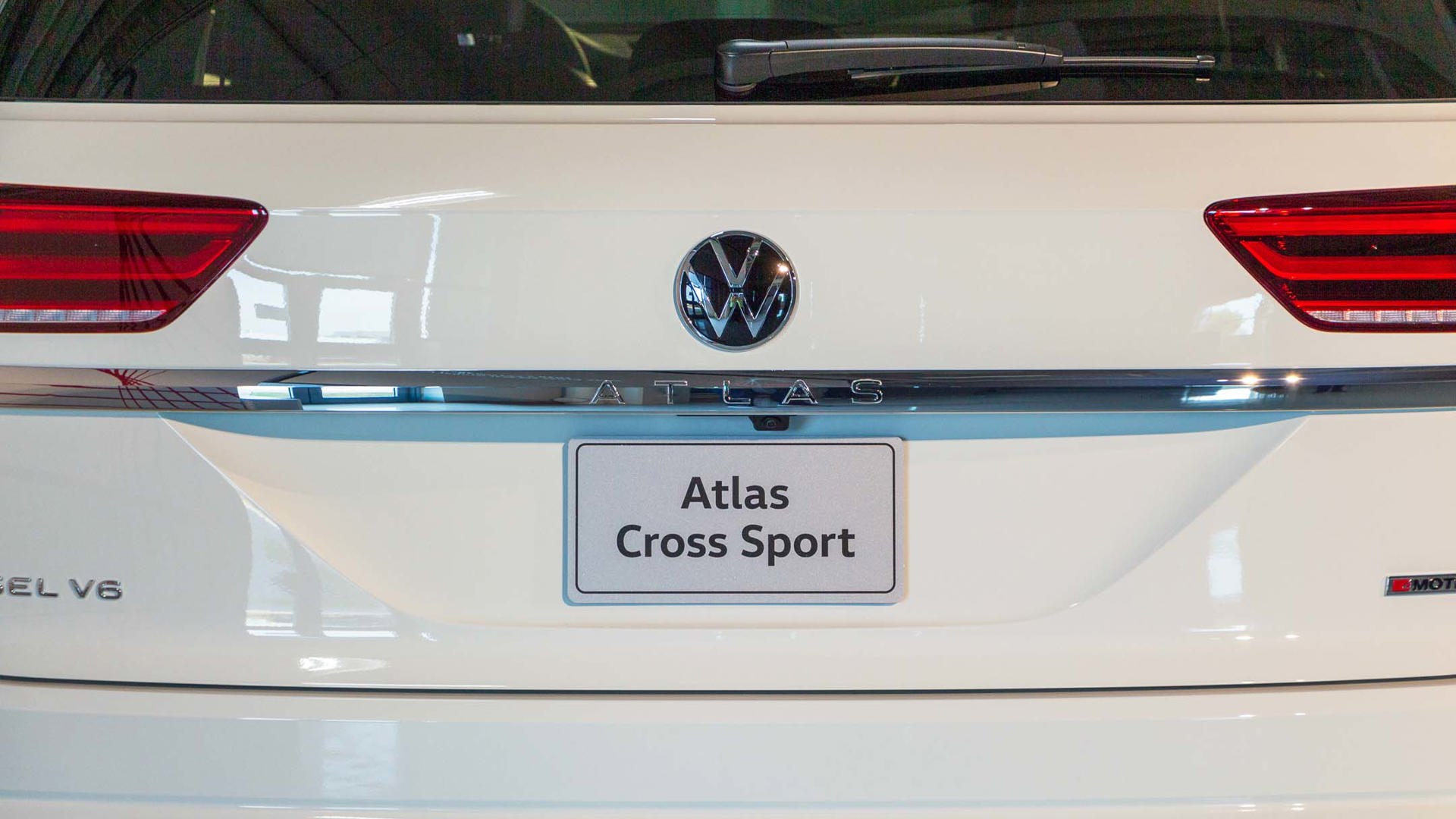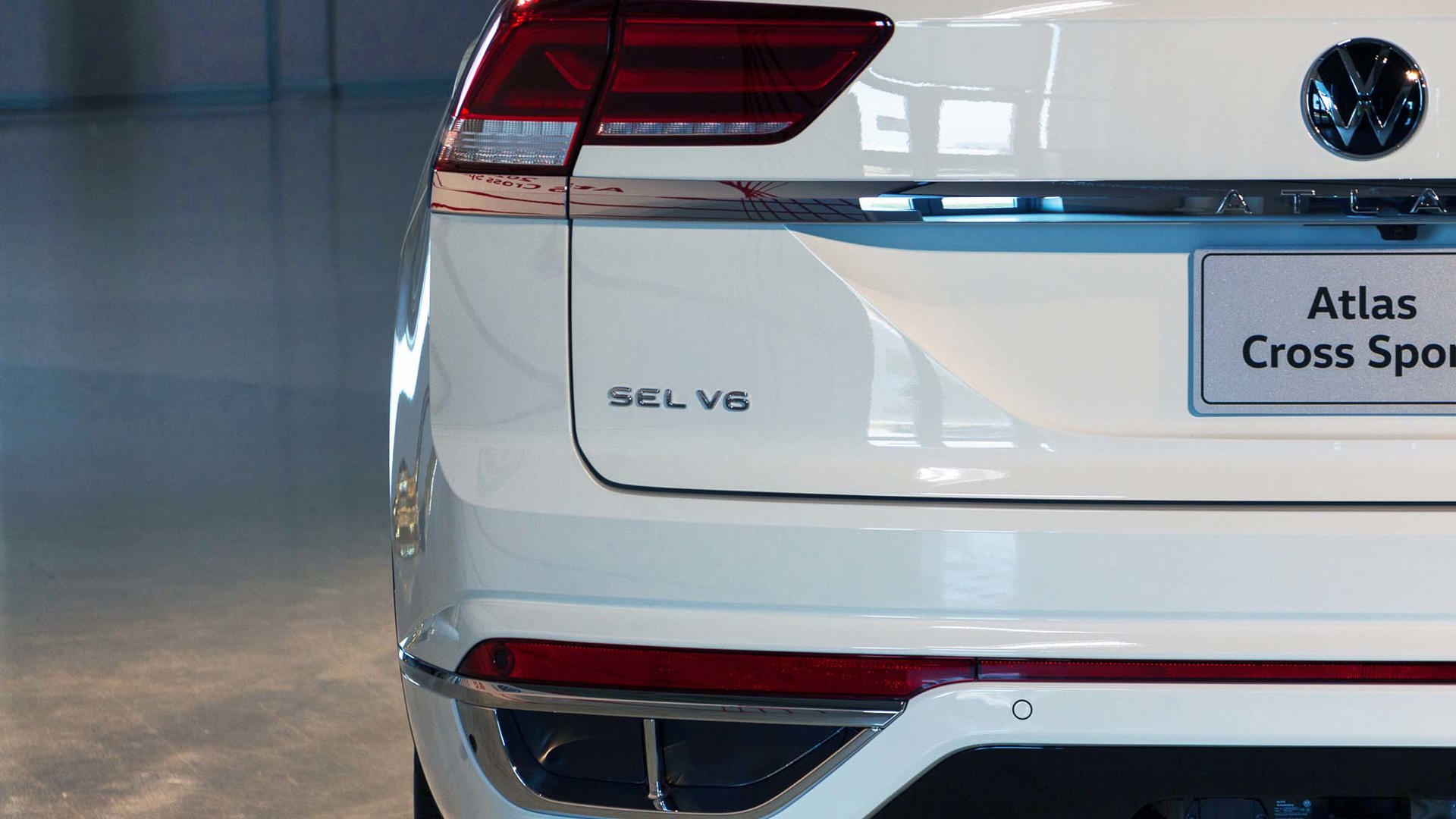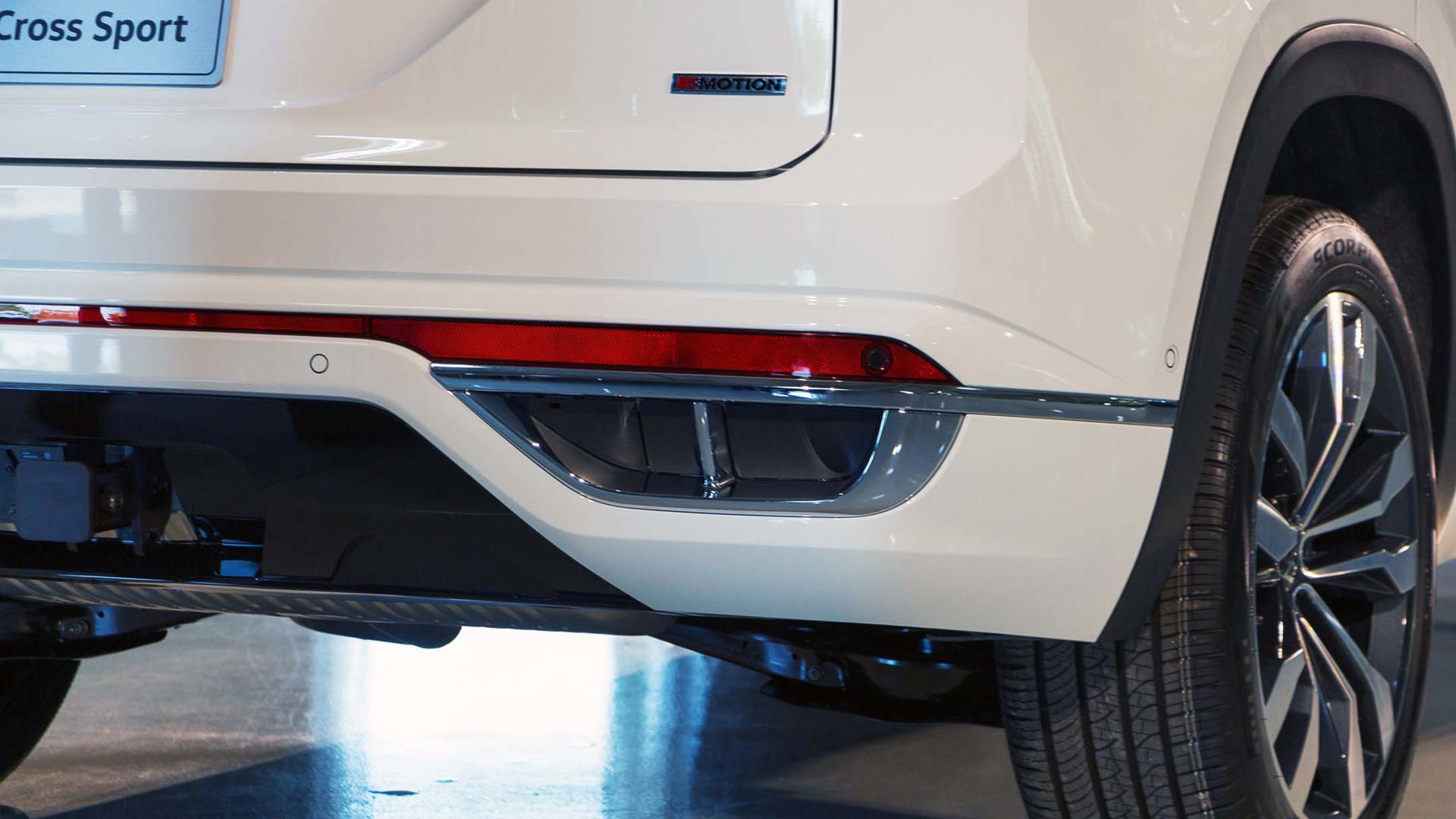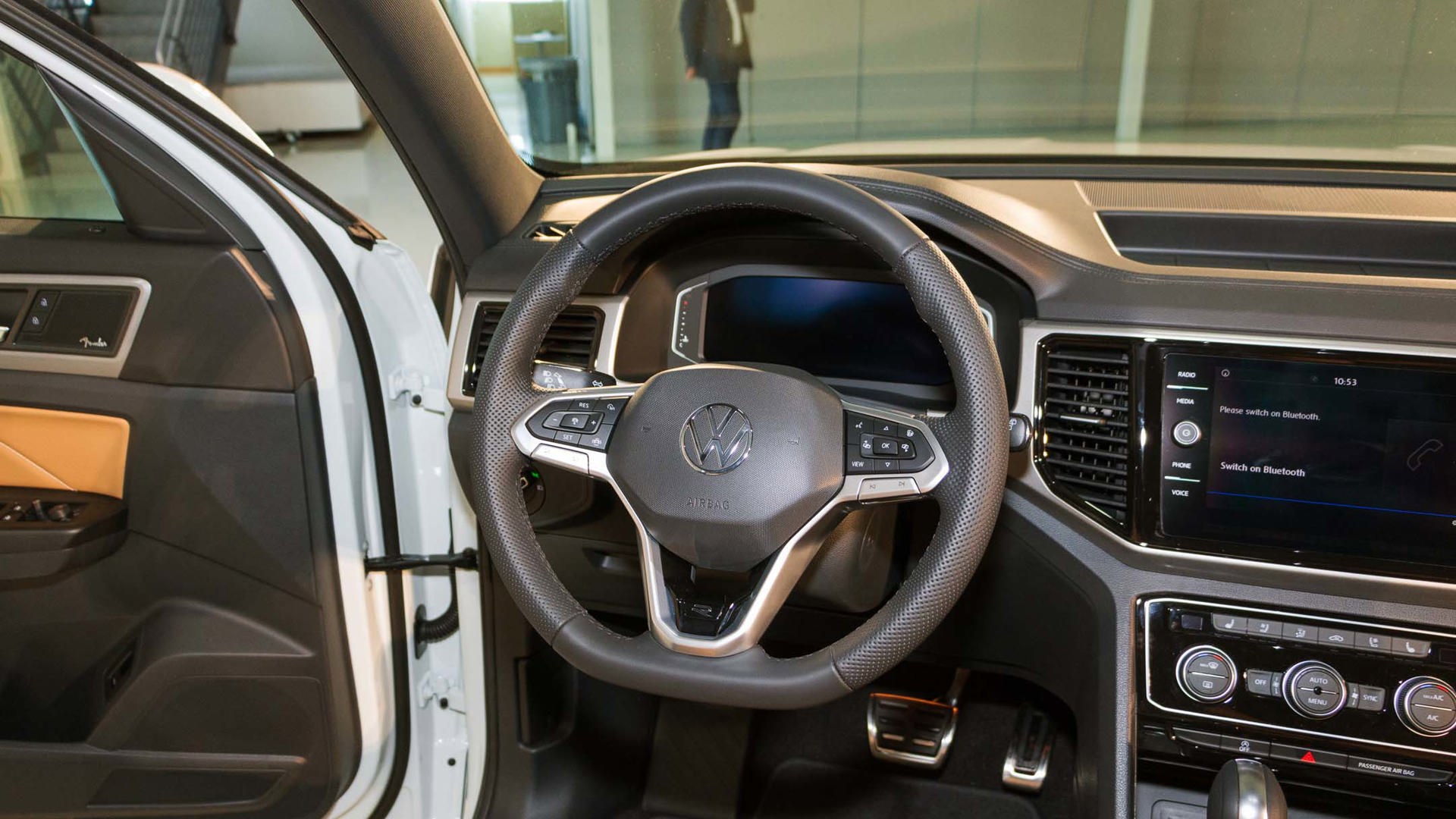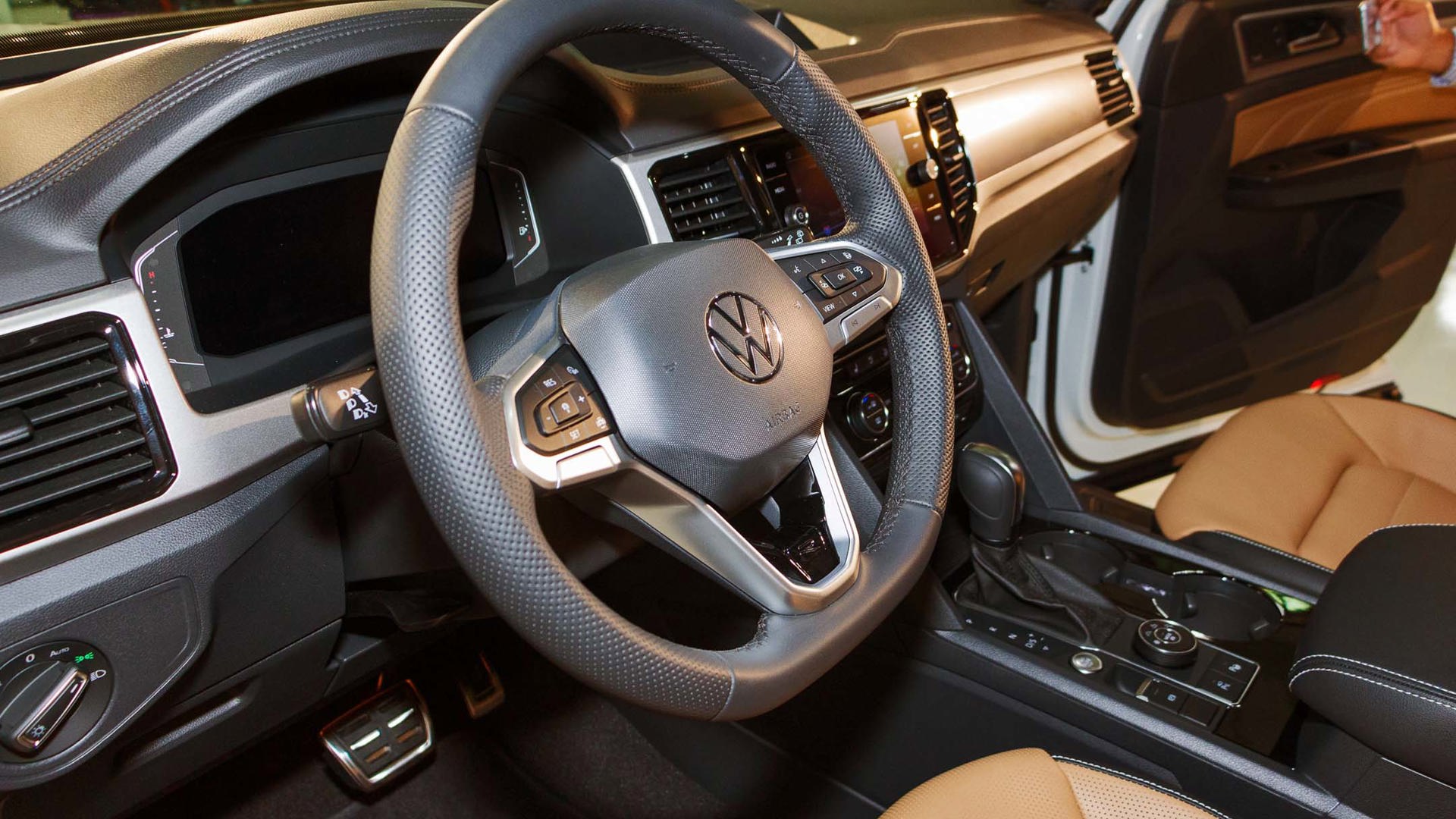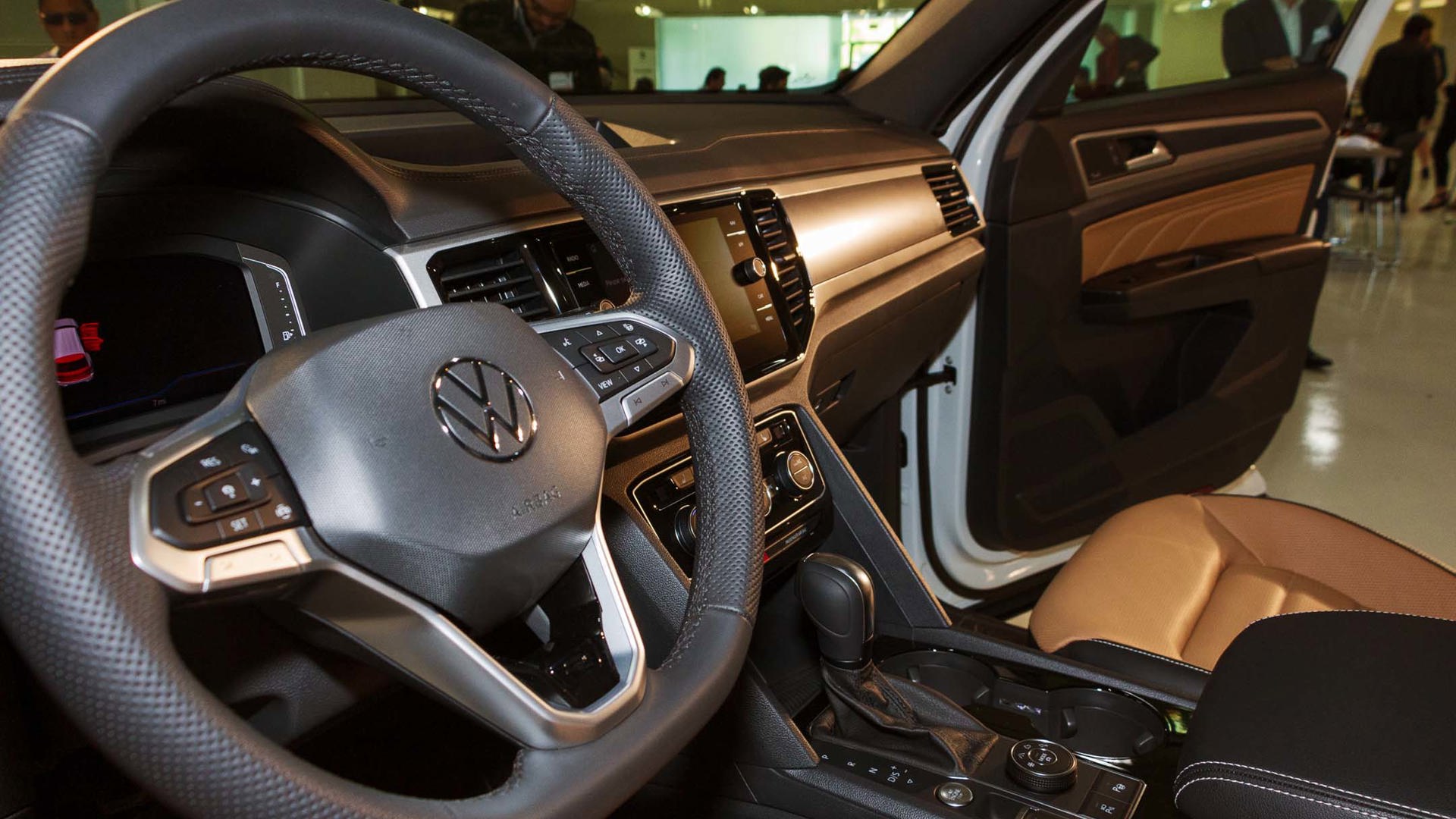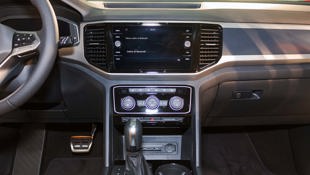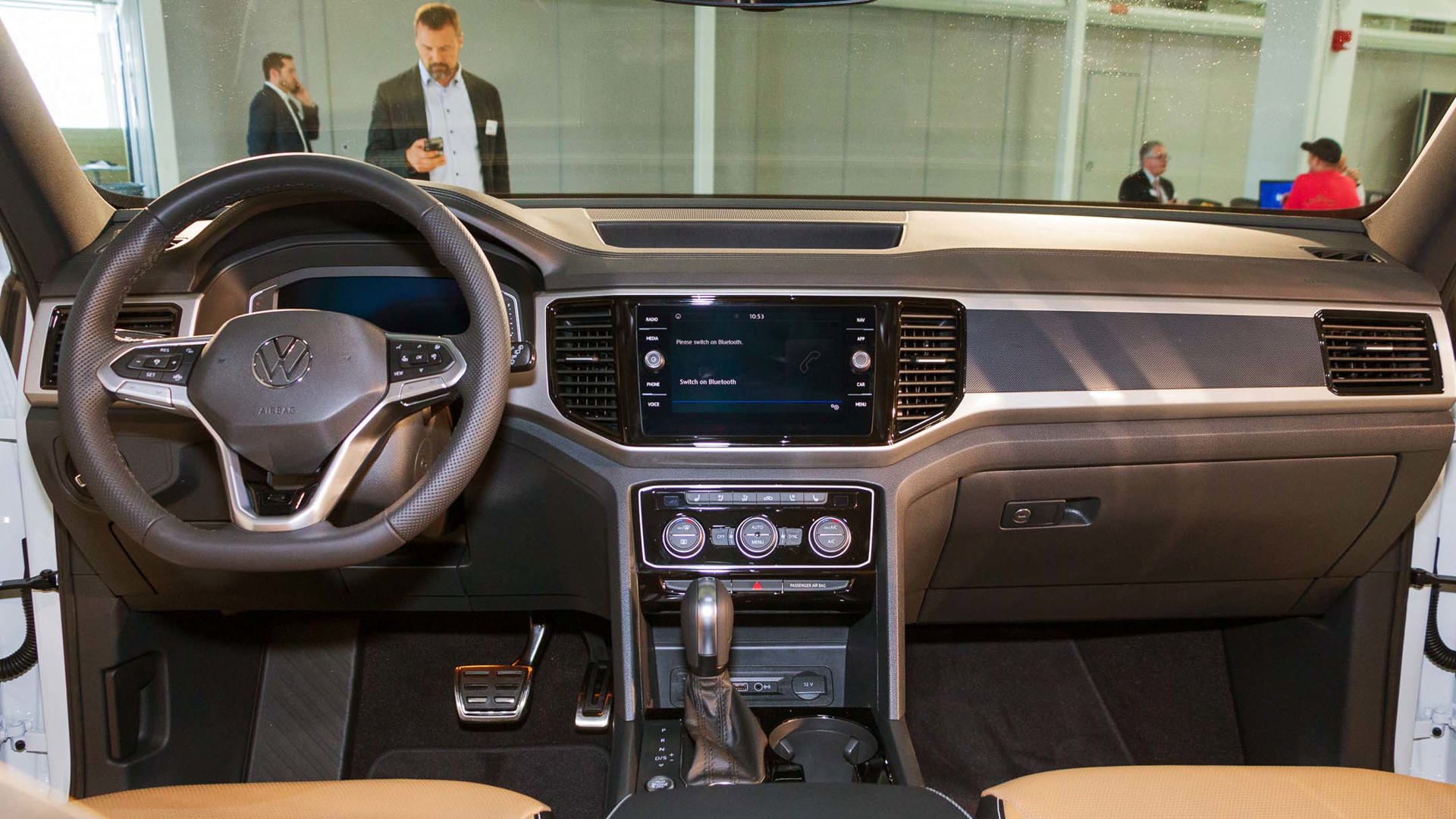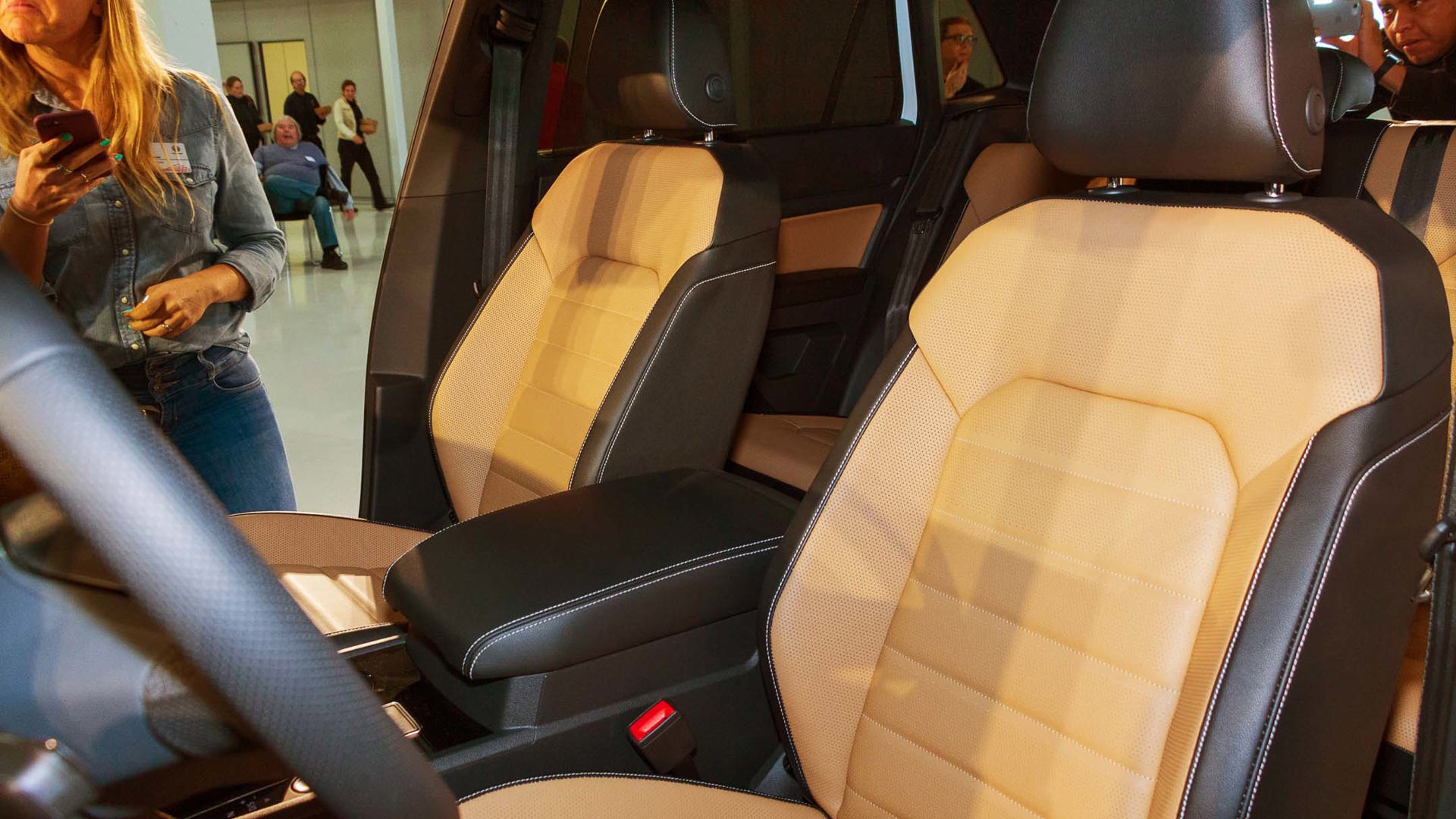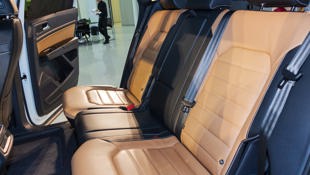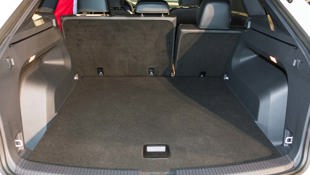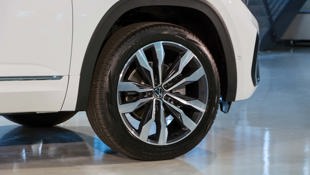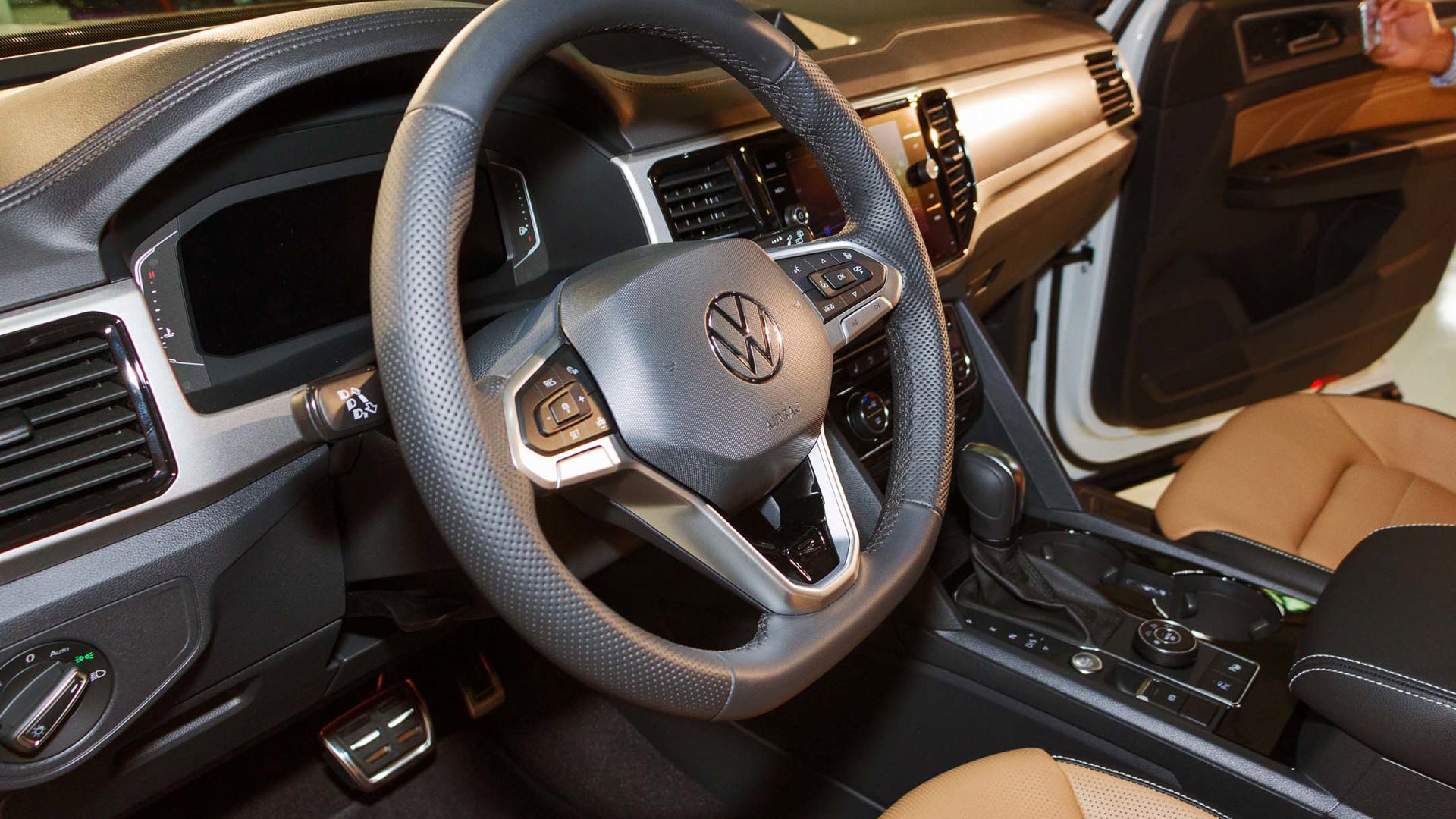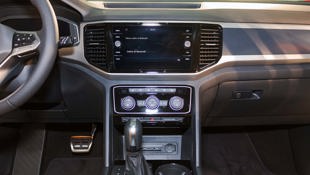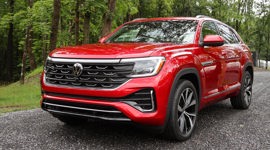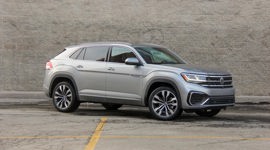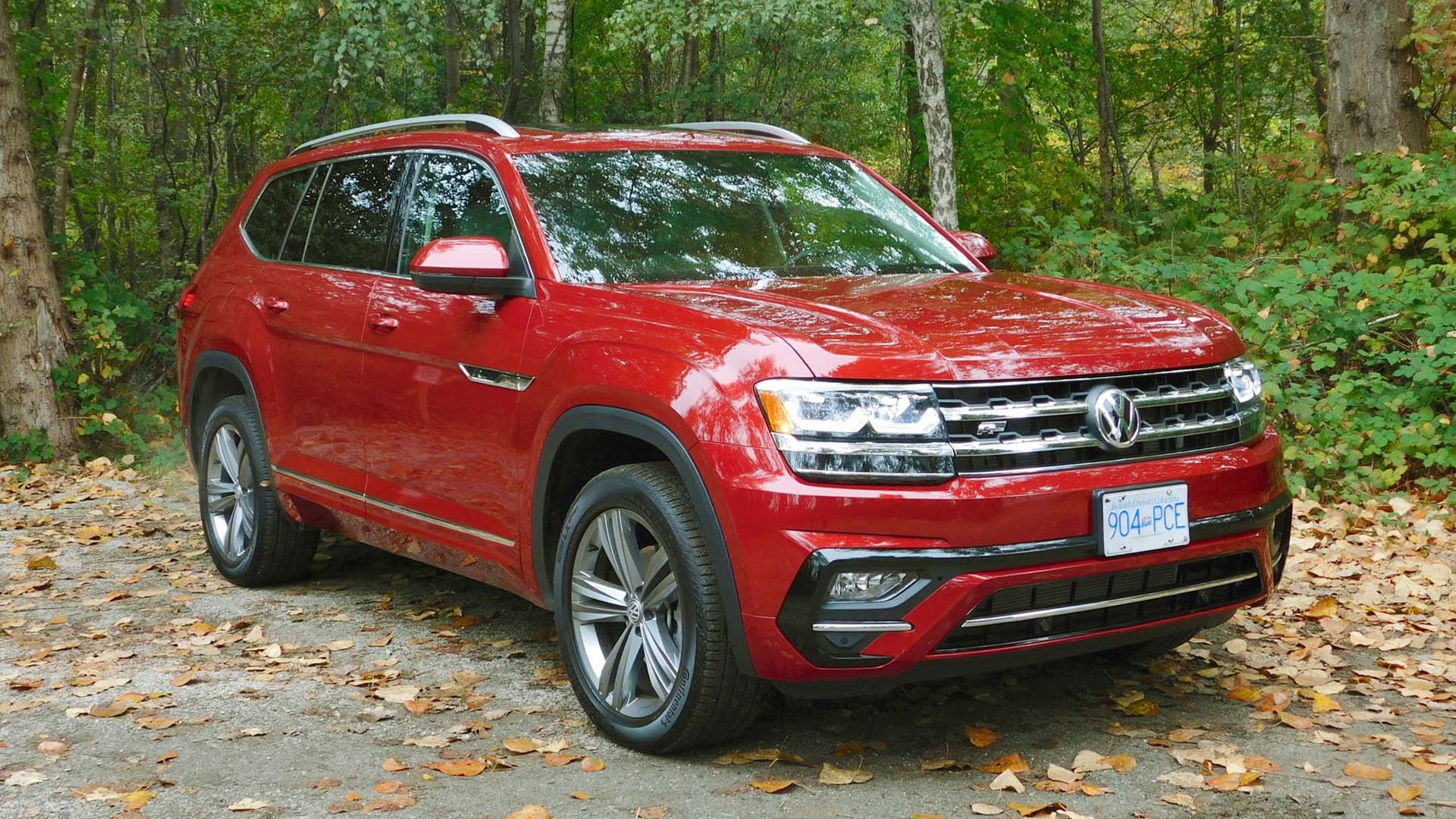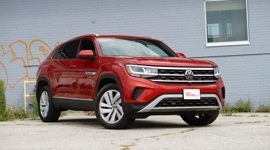The big two-row crossover segment was pretty empty for a long time. Buyers flocked to the even-bigger three-rows, and the smaller two-rows were the hot ticket for drivers needing only four seats. But now, like every crossover segment, it’s growing. VW is here with its own new entry, a shortened version of the Atlas: the 2020 Volkswagen Atlas Cross Sport.
Volkswagen’s trimming happens not between the wheels like in some similar models, but at the back, where it’s 71 mm shorter than the standard Atlas. It works, since you don’t need to force anyone to sit in the now-binned third row, and it preserves the massive rear-seat legroom. Though there’s slightly less headroom back there than in the Atlas, it’s still big enough for anyone who can fit in the front seats. Behind the second row, it’ll hold 1,141 L of stuff compared with the 1,580 L of the big one.
Some of that cargo space difference is from the shortened length, with the rest coming off the top. The Cross Sport is 58 mm lower than its bigger brother: all of it taken from the cabin height, not the ride height. And since this is the sporting one – it’s in the name, after all – it gets a more steeply raked windshield and hatch, with the roof coming down more quickly. With the tops of the doors the same height, it’s almost a 1950s chopped look. There are changes up front, too: The noses get a new three-bar chrome grille that differentiates it from the Atlas, new LED headlights on all trims, and an accent light profile that’s unique to the Cross Sport.
Inside, the Cross Sport isn’t just an Atlas with some new trim in the back. VW has given it a new steering wheel with what feels like a thicker rim and a smaller airbag that looks much more appealing than the regular Atlas. There are also some new materials inside, like available accent stitching on the doors and seats, plus wireless phone charging, a feature you can’t get on the standard Atlas.
The automaker is pitching this one as a more premium offering than the standard vehicle, which means it’ll get some unique interior colours and three paint hues not available on the standard model. The R-Line trim, which is the one in the photos, adds unique bumpers with chrome accents around the air scoops, plus piano black trim and those big wheels.
The added colours and enhanced trim come because the company says its research shows that while three-row buyers pick practicality, two-row shoppers want style. Which is why the segment is now full of more stylish offerings like the Chevy Blazer and Honda Passport, and vehicles that offer more of a lifestyle image like Jeep’s Grand Cherokee. So while VW is still mum on the price, expect this one to ring in a bit higher than the bigger Atlas.
The same two engines will be on offer in both models, with a 235 hp, 258 lb-ft 2.0L turbo-four as the entry engine and a 276 hp, 266 lb-ft V6 in higher trims. VW doesn’t have official fuel economy figures, but they said that figures won’t be very different from the full-fat Atlas, despite the lower roof line 100 kg weight loss of the Cross Sport. For reference, the Atlas is rated for 13.8 L/100 km city, 10.2 highway.
While front-drivers will be available in the US, Canadian vehicles come exclusively with 4Motion all-wheel drive. They’ll also have an eight-speed automatic and automatic stop-start. The Cross Sport gets no suspension lift for off-road capability nor a stiffer suspension for a more sporting driving feel, both techniques employed by competitors in the segment.
It will have four on-road drive modes, with the fourth being a customizable option, and three for more difficult terrain. Snow, off-road, and off-road individual. The modes change settings like throttle opening, when the engine shifts, the traction control, and even the radar cruise control. That’s right, the radar cruise in Sport can respond more aggressively than in normal.
Driver customization linked to the key lets multiple drivers store a wide range of settings, so that they don’t have to change things manually when they get back in their Atlas. There are the usual power seat position and radio stations, but also features like the parking sensor noise and noise level, the radar cruise following distance, climate control settings, and more. Handy for when the family truckster is getting passed back and forth, especially if the different drivers have very different driving styles.
The front seats will be heated as standard on all trims, along with the side mirrors and washer nozzles. Comfortline and up heat the steering wheel, and Execline warms up the rear seats.
Available active safety features include forward collision warning with automatic braking, blind spot monitoring, and rear traffic alert. There’s a post-collision braking system that makes sure you’re stopped and stay stopped following an airbag deployment. Adaptive cruise with traffic-jam assist, a feature that allows the vehicle to come to a complete stop and then set off again with moving traffic – as long as it’s moving within three seconds – is new for the Cross Sport, as is Dynamic Road Sign Display, which uses the nav data to display signs like speed limits, no-passing zones, school zones, and even construction zones. That last one is confirmed for the US, but VW Canada is checking on availability north of the border. Park assist that can self-park in parallel or perpendicular spaces will be available as well.
The 2020 Atlas Cross Sport will be available late in Q1 of next year, with pricing details closer to the on-sale date.
